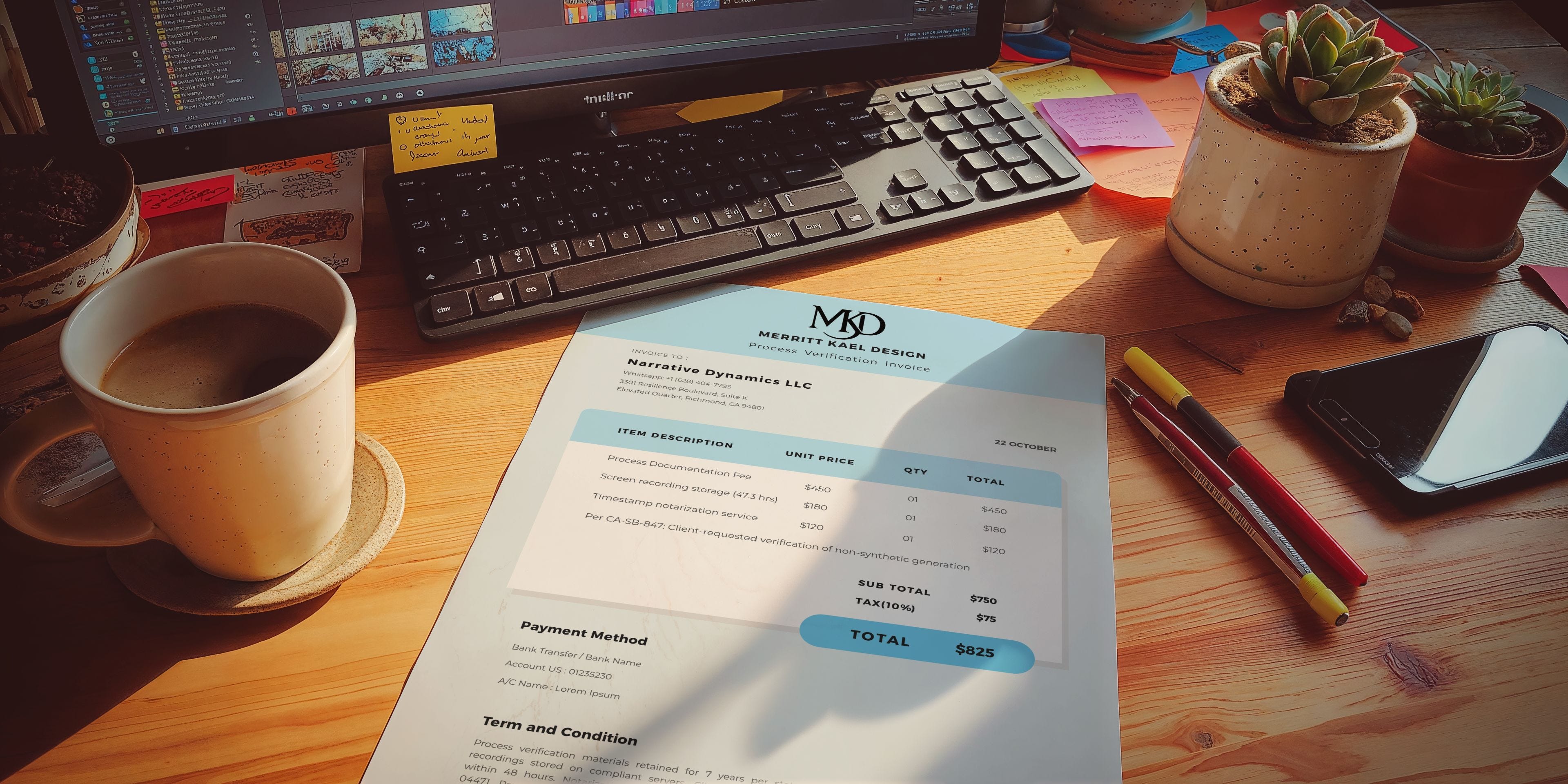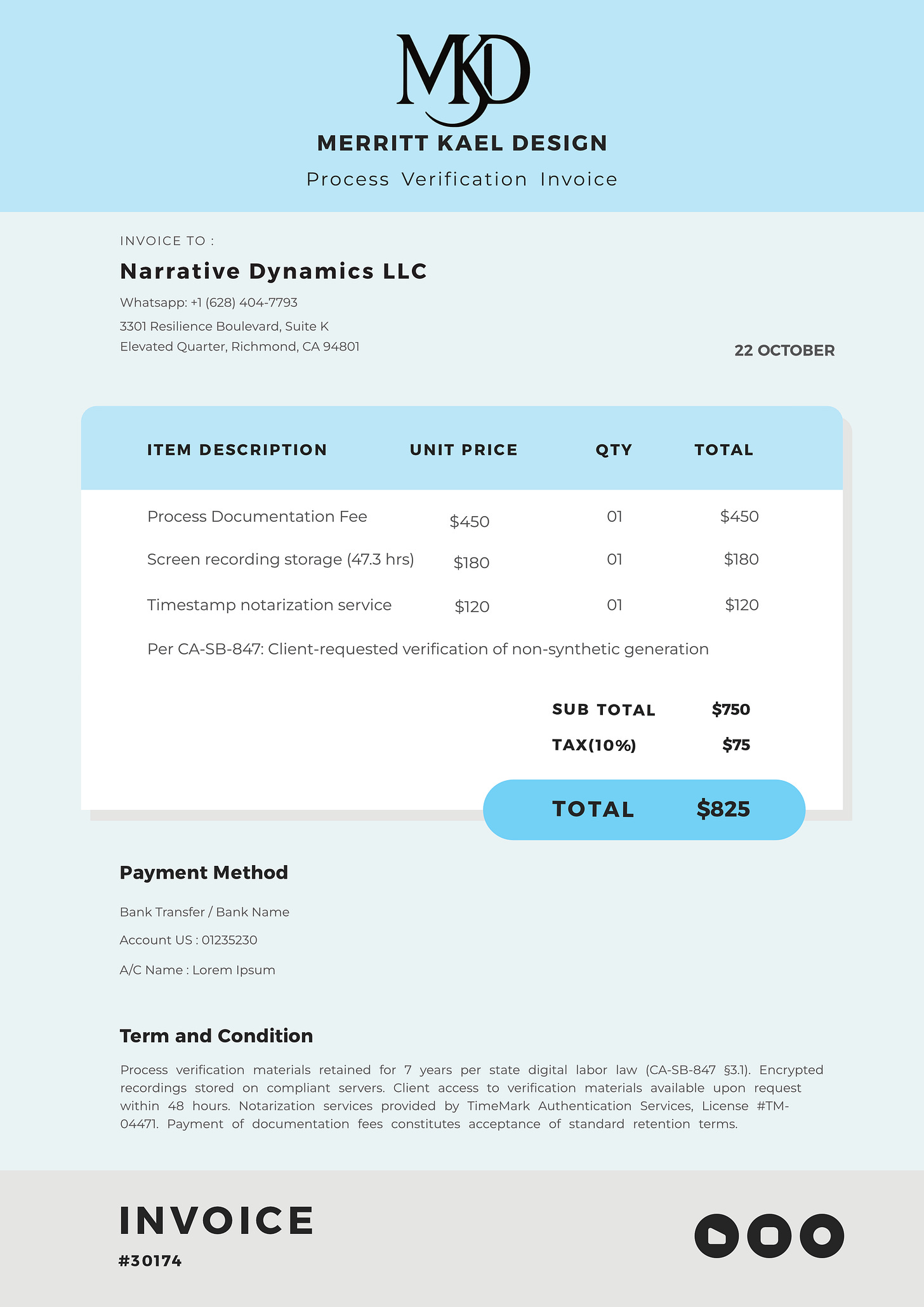Prove You're Not a Robot (And Pay For It)
Labour learns to show its work—for a fee
Today I landed in what appears to be a freelancer’s home office, judging by the collection of coffee mugs in various states of abandonment and the distinct aura of deadline panic.
Found this invoice on the desk, the kind of business document that tells you more about a world than any manifesto ever could.
So here’s where we’ve arrived: proving you did the work now costs more than a day’s labor. Not just proving you did it well—proving a human did it at all. The “Process Documentation Fee” sits there at $450 like it’s the most natural thing in the world, and maybe by the time this invoice gets issued, it is.
The really telling bit is “Client-requested verification of non-synthetic generation.” Not “artist-offered proof of authenticity.” The client has to ask for it. Which means the default assumption has quietly flipped. We used to disclose when something was automated. Now we disclose when it’s not.
And look at those line items. Screen recording storage. Timestamp notarization. Someone’s making money off the infrastructure of proving you’re human—which, honestly, is the most predictably capitalist outcome possible. We couldn’t just agree that creative work has value. We had to build an entire verification industry around it first.
Forty-seven point three hours of screen recording. Imagine having to capture every moment of your creative process just to prove you were the one creating. Every false start, every bathroom break, every moment you stared at the ceiling waiting for an idea to arrive. All stored, timestamped, and retained for seven years per digital labor law.
The Janky Time Machine started leaking temporal coolant all over the floor1—which is ironic because now I’m going to have to prove I actually leaked it and didn’t just generate an image of a leak. The verification forms alone will cost me more than the cleaning deposit.
Here’s the thing nobody tells you about the future: we didn’t decide that humans needed to prove they’re human. We just kept making it cheaper and faster to not be human, and then acted surprised when proving authenticity became the expensive option.
Makes you wonder what happens to all the work that can’t afford verification. Does it just exist in this weird liminal space of plausible deniability? “We can neither confirm nor deny that a person made this”?
The invoice footer says materials retained for seven years. Which raises the obvious question: what are we keeping them *for*? The inevitable lawsuits? The historical record? Or just because once you build a bureaucracy, it needs to justify its existence?
Anyway, the Janky Time Machine’s making that wheezing sound that means I need to leave before it strands me here. But I’m taking this invoice with me. Feels important to remember what it looked like when we started charging extra for being real.
Going to file it somewhere. For seven years, obviously.
I read this article and the inspiration for today’s DFD leaked out of it like temporal coolant all over the floor. ➡️ https://www.artnews.com/art-news/news/ai-generators-artists-tools-creative-process-1234758030/




